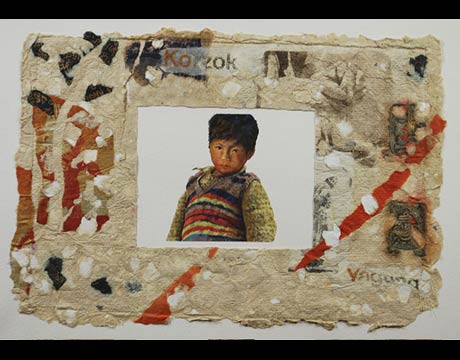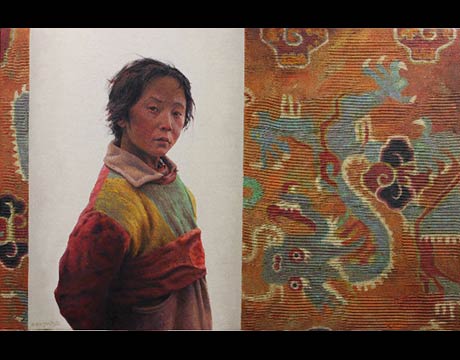Gallery - Past Exhibitions - 2008 - Kharnakpa / Brokpa
(Click image for slideshow)
In the fall of 2008 I returned once again to Ladakh. I traveled 170 kms. west of Leh along the Indus River to an area called Da Hanu. In this region there exists a small sprinkling of people called the Brokpa, one of the most extraordinary cultures in all the Himalaya.
The Brokpa descend from the Dards, an Aryan tribe that moved into western Ladakh from the Hindukush mountains (Pakistan) centuries ago. The Brokpa broke away from the Islamic faith, and converting to Buddhism - but a wilder form of Buddhism that carried animistic beliefs from the early Bon religion. Offerings of sacrificial goats and sheep to appease their gods and demons are still commonly practised.
Although numbering less than 2000 people, the Brokpa have their own language, communicating in an archaic Shina language that is taught verbally, with no written alphabet.
Rigorously protecting their culture the Brokpa enforce a strict policy, prohibiting their people to marry outsiders. With such a limited population base this approach has produced inbreeding problems, such as infertility. To overcome this the Brokpa devised a plan whereby a weeklong 'love making' festival of fertility is celebrated every three years. Local people are encouraged to come to the area and drink, party and make free love. Women who become pregnant after the event are considered blessed, with no stigmas attached nor is there any concern who the father is.
Although located in the middle of the Himalaya at 10,000' the Brokpa enjoy an amazing microclimate that allows them to produce two crops a year. Their lands are on terraced, mountain slopes, watered by ancient aqueducts. Apricots, apples, peaches, grapes and walnuts were all being gathered and preserved (by drying) while I was there. Vegetables of all the common varieties grow in astonishing abundance - often mingled with a profuse array of flowers. As is their tradition in this strange and wonderful 'Garden of Eden' women and some times even men adorn their hair and head-dresses with the flowers they grow.
After Da Hanu I trekked back to Lingshed from Wanla, to again visit my good friend Tashi, one of the 35 lamas at this isolated monastery in north Zanskar. Tashi sent his brother and 4 donkeys to help bring me there. Although the weather in September usually is fine, we ran into a severe snowstorm during the five day trek out of Lingshed. At our camp directly below the highest pass called Shinga-La it snowed for 22 hours, making our climb over the pass exceedingly difficult and dangerous. Many days later I learned that this was a massive snowfall that covered a large area. It produced avalanches that swept cars off the road, killing a total of 7 people. Others died trekking. Scores of people suffered from snow blindness, frostbite and hypothermia. Over 140 people needed to be rescued by airlift. The older people told me they had never experienced such a snowfall in the month of September in their living memory.
My final destination for this trip was back to Changthang to visit the Kharnakpa. This wasn't easy either as the Indian army was refusing access to the region due to their preoccupation with the snow rescue effort. Taking a round about route through Puga, Phuntsog and I managed to visit both the Anghoampa at their snowbound, high mountain camp and the Kharnakpa at their Yagang camp. Although the four day visit was too brief it was wonderful to see my nomad friends again. However, in the two years since I had seen the Kharnakpa, the number of families and consequently a good deal of the vitality of the tribe was clearly diminished. There were over 50 families when I first met the Kharnakpa five years ago, now only 25 families remain to carry on the nomadic life of their forefathers.
:: BACK TO GALLERY






